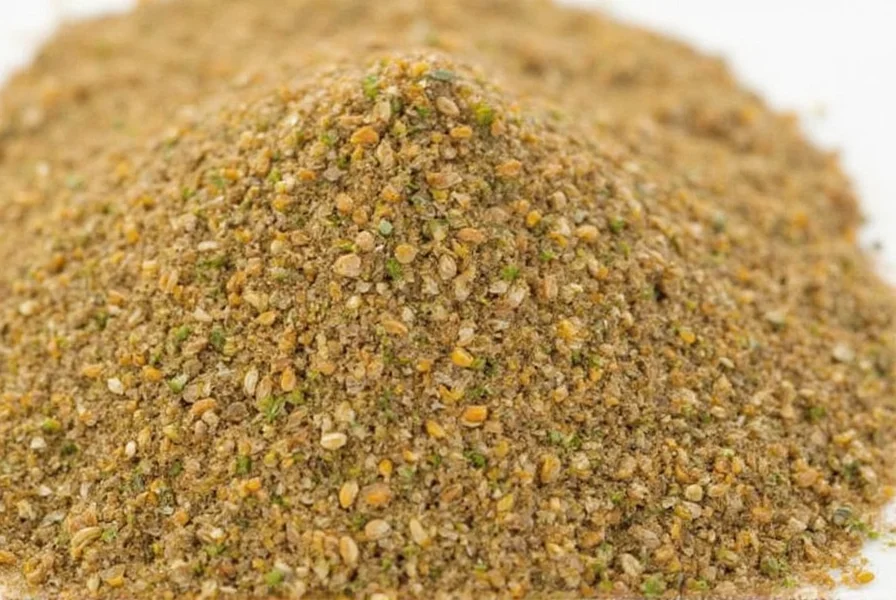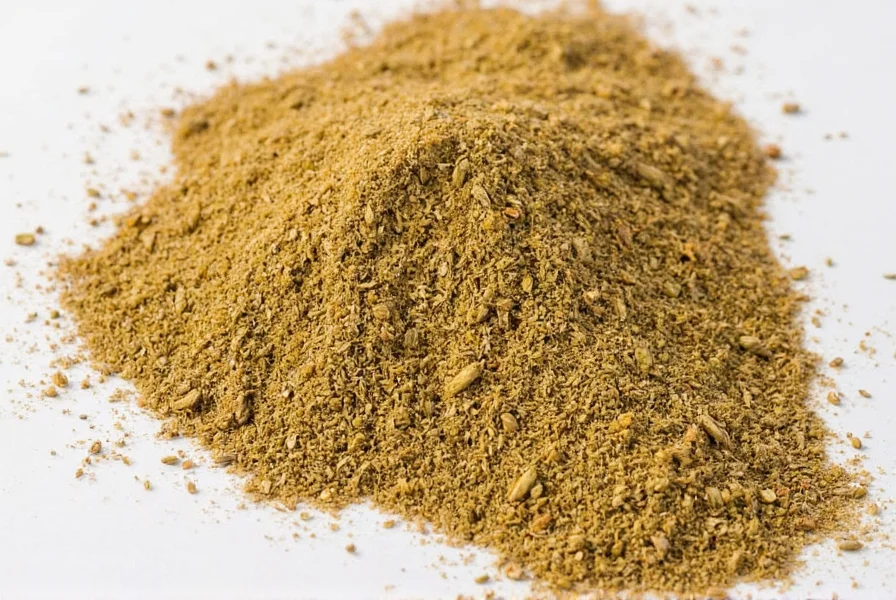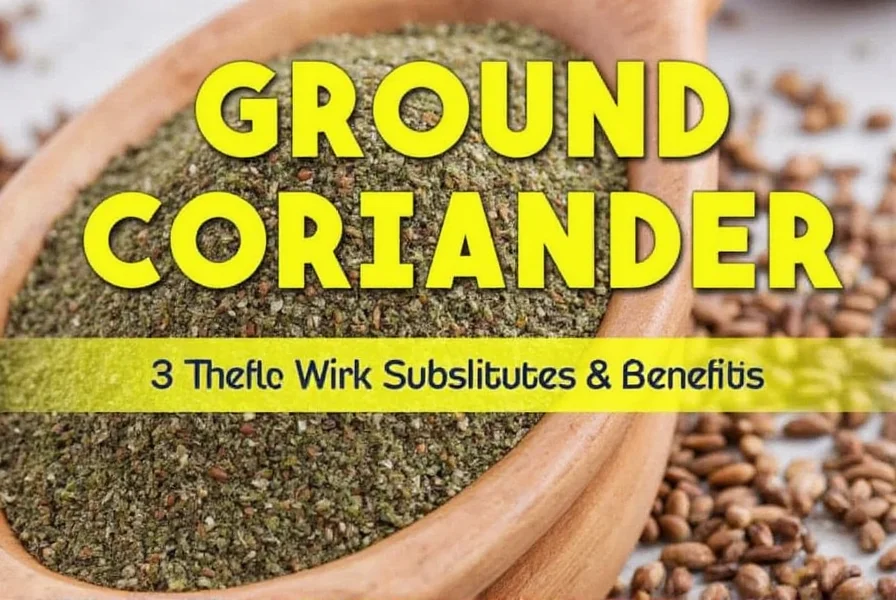Understanding ground coriander begins with recognizing its botanical origins. Coriander (Coriandrum sativum) produces both the fresh herb known as cilantro (from its leaves) and the spice we call coriander (from its dried seeds). When these seeds are ground, they transform into the versatile spice that enhances countless recipes worldwide.
What Exactly Is Ground Coriander?
Ground coriander represents the powdered form of dried coriander seeds, which are actually the fruit of the coriander plant. This spice processing method releases essential oils that create its distinctive flavor profile. Professional chefs and home cooks alike rely on ground coriander for its ability to add depth and complexity to dishes without overwhelming other ingredients.
Flavor Profile and Sensory Characteristics
Ground coriander offers a unique combination of flavors that sets it apart from other spices. Its primary characteristics include:
| Characteristic | Description |
|---|---|
| Taste | Warm, citrusy, slightly sweet with subtle floral notes |
| Aroma | Fragrant, lemony, with earthy undertones |
| Mouthfeel | Smooth when properly ground, no gritty texture |
| Aftertaste | Clean, refreshing finish without bitterness |
Ground Coriander vs. Coriander Seeds vs. Fresh Cilantro
Many home cooks confuse these three forms of the same plant. Understanding the differences is crucial for proper recipe execution:
- Ground coriander: Powdered dried seeds with warm, citrusy flavor; used in spice blends and cooked dishes
- Coriander seeds: Whole dried seeds with more intense flavor; often toasted before grinding or used whole in pickling
- Fresh cilantro: The leafy green part of the plant with bright, citrusy flavor; used as garnish or in fresh salsas and chutneys
When following recipes, substituting one form for another without adjustment will significantly alter the final dish. Professional chefs emphasize that ground coriander provides more immediate flavor release in cooking compared to whole seeds, which require longer cooking times to release their full potential.
Essential Culinary Applications
Ground coriander serves as a foundational spice in numerous global cuisines. Its versatility makes it valuable for both savory and sweet applications:
In Indian cuisine, ground coriander forms the base of virtually all curry powders and masalas. It combines perfectly with cumin, turmeric, and ginger to create complex flavor profiles. Middle Eastern cooking relies on ground coriander in spice blends like baharat and za'atar, while Mediterranean dishes use it in meat rubs and vegetable preparations.
Professional bakers appreciate ground coriander's subtle warmth in certain breads and pastries. It complements other warm spices like cinnamon and cardamom in Scandinavian and German baking traditions, particularly in recipes for gingerbread and spiced cookies.
Optimal Usage Techniques for Home Cooks
To maximize ground coriander's flavor potential, follow these professional kitchen techniques:
- Dry toast before use: Briefly toast ground coriander in a dry skillet over medium heat for 30-60 seconds to intensify flavors
- Add at the right time: Incorporate ground coriander early in cooking for blended flavors or later for more pronounced individual notes
- Balance with acids: Pair with lemon juice or vinegar to enhance its citrus notes
- Combine with fats: Bloom in oil or ghee to distribute flavor evenly throughout dishes
When working with ground coriander in spice blends, remember that its flavor develops over time. Creating custom blends and allowing them to rest for 24 hours before use results in more harmonious flavors as the essential oils meld together.
Proper Storage Methods for Maximum Freshness
Ground spices lose potency faster than whole spices. To preserve ground coriander's flavor:
- Store in an airtight container away from light, heat, and moisture
- Keep in a cool, dark cupboard (not above the stove)
- Use within 6 months for optimal flavor (vs. 1 year for whole seeds)
- Consider freezing for long-term storage (up to 1 year)
Professional chefs recommend buying whole coriander seeds and grinding them as needed using a dedicated spice grinder or mortar and pestle. This approach guarantees maximum freshness and flavor intensity compared to pre-ground versions.

Substitution Options When Ground Coriander Is Unavailable
While no perfect substitute exists for ground coriander, these alternatives work in a pinch:
- Coriander seeds (ground fresh): Use equal amount, but toast first for best results
- Cumin + lemon zest: 3/4 tsp cumin plus 1/4 tsp lemon zest per 1 tsp ground coriander
- Fennel seeds (ground): Use half the amount due to stronger flavor
- Caraway seeds (ground): Use sparingly as flavor profile differs significantly
When substituting in recipes calling for ground coriander, remember that the dish will have a different flavor profile. For authentic Indian or Middle Eastern dishes, finding proper ground coriander yields significantly better results than substitutions.
Nutritional Profile and Potential Health Benefits
Ground coriander offers more than just flavor. Research indicates several potential health benefits associated with regular consumption:
- Rich in antioxidants that may help reduce inflammation
- Contains dietary fiber supporting digestive health
- Provides small amounts of iron, magnesium, and manganese
- May help regulate blood sugar levels according to preliminary studies
- Possesses antimicrobial properties that support food safety
While ground coriander shouldn't be considered a medicinal treatment, incorporating it regularly into a balanced diet contributes to overall nutritional diversity. The spice's antioxidant content remains stable even after cooking, making it valuable in prepared dishes.

Signature Recipes Featuring Ground Coriander
Ground coriander shines in these classic preparations:
- Chicken Tikka Masala: Forms the flavor base along with other spices in the marinade and sauce
- Hummus: Adds depth when combined with cumin in traditional recipes
- Cucumber Raita: Balances cooling yogurt with warm spice notes
- Lamb Koftas: Essential in Middle Eastern meatball seasoning
- Spiced Carrot Soup: Complements sweet vegetables beautifully
For beginners, try adding 1/2 teaspoon of ground coriander to your next batch of roasted vegetables or homemade salad dressing. This small addition creates noticeable depth without overwhelming other flavors.
Frequently Asked Questions
Is ground coriander the same as cilantro?
No, ground coriander and cilantro come from different parts of the same plant. Ground coriander is made from the dried seeds, while cilantro refers to the fresh leaves. They have completely different flavor profiles—ground coriander is warm and citrusy, while cilantro has a bright, grassy taste.
Can I substitute fresh cilantro for ground coriander in recipes?
No, fresh cilantro cannot substitute for ground coriander. They offer entirely different flavor profiles. If you need a substitute for ground coriander, consider using a combination of cumin and lemon zest, or toast and grind whole coriander seeds instead.
How long does ground coriander stay fresh?
Ground coriander maintains optimal flavor for about 6 months when stored properly in an airtight container away from light and heat. Whole coriander seeds stay fresh for up to a year. For best results, buy whole seeds and grind them as needed.
What's the difference between coriander and cilantro?
Coriander refers to the seeds of the Coriandrum sativum plant, while cilantro refers to its leaves. In American English, the leaves are called cilantro and the seeds/spice are called coriander. In British English and many other regions, both are referred to as coriander, with the leaves sometimes called fresh coriander.
Why does my ground coriander taste bitter?
Bitter ground coriander usually indicates it's past its prime or was exposed to excessive heat during storage. Old ground coriander loses its essential oils and develops off-flavors. To prevent bitterness, store ground coriander in a cool, dark place and replace it every 6 months. For best flavor, grind whole seeds as needed.











 浙公网安备
33010002000092号
浙公网安备
33010002000092号 浙B2-20120091-4
浙B2-20120091-4